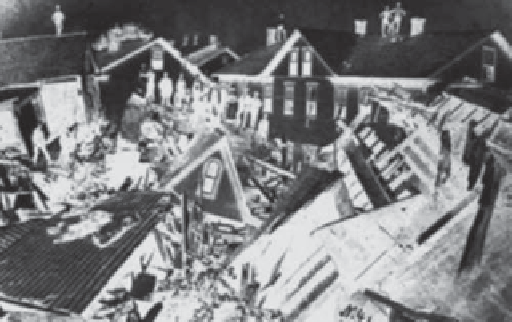Geology Reference
In-Depth Information
Mercury, Venus, Earth, and Mars share a similar early his-
tory of accretion, differentiation, and volcanism, but Earth is
the only terrestrial planet with abundant surface water. The
small size and high temperature of Mercury and the runaway
greenhouse effect on Venus preclude the possibility of liq-
uid water on these planets. Mars is too small and too cold
for liquid water, although it does have some frozen water and
trace amounts of water vapor in its atmosphere. However,
satellite imagery reveals winding valleys and canyons that
were probably eroded by running water during the planet's
early history. In contrast, oceans and seas cover approxi-
mately 71% of Earth's surface.
The
hydrosphere
consists mostly of water in the oceans
(Table 12.1), but it also includes water vapor in the atmo-
sphere, groundwater (see Chapter 13), water frozen in glaciers
(see Chapter 14), and water on land in lakes, swamps, bogs,
streams, and rivers (see the chapter opening photograph).
Our main concern in this chapter is with the small amount
of running water confi ned to channels. In any consideration
of the interactions among Earth's systems, it is important to
note that running water has a tremendous impact on most of
the land surface.
You have probably experienced the power of running
water if you have ever swam or canoed in a rapidly fl owing
stream or river, but to truly appreciate the energy of mov-
ing water, you need only read the vivid accounts of fl oods.
For example, at 4:07 p.m. on May 31, 1889, residents of John-
stown, Pennsylvania, heard “a roar like thunder” and within
10 minutes the town was destroyed when an 18-m-high wall
of water tore through the town at more than 60 km/hr, sweep-
ing up houses, debris, and entire families (
◗
Figure 12.1
Aftermath of the Johnstown, Pennsylvania Flood
On May 13, 1889, an 18-m-high wall of water destroyed Johnstown
and killed at least 2200 people.
debris on which they escaped the flood. The Johnstown
fl ood, the most deadly river fl ood in U.S. history, resulted
from heavy rainfall and the failure of a dam upstream from
the town. This was not the fi rst time that a dam had failed
in this country nor would it be the last, but it was certainly
the most tragic.
Every year, fl oods cause extensive property damage and
fatalities, and yet we derive many benefits from running
water, even from some fl oods. In Egypt, before completion of
the Aswan High Dam in 1970, farmers depended on annual
fl ooding of the Nile River to replenish their croplands (see
Geo-Focus on page 307). Furthermore, running water—that
is, water confi ned to channels—is one source of freshwater
for agriculture, industry, domestic use, and recreation, and
about 8% of all electricity used in North America is gener-
ated by falling water at hydroelectric generating plants. Large
waterways throughout the world are avenues of commerce
(
Figure 12.1).
According to one account, “Thousands of people desperately
tried to escape the wave. Those caught by the wave found
themselves swept up in a torrent of oily, muddy water,
surrounded by tons of grinding debris. . . . Many became
hopelessly entangled in miles of barbed wire from the
destroyed wire works.”*
When the fl ood was over, at least 2200 people were dead,
some of them victims of a fire that broke out on floating
◗
Figure 12.2), and when Europeans explored the interior of
North America, they followed the St. Lawrence, Mississippi,
Missouri, and Ohio rivers.
◗
Most of Earth's 1.33 billion km
3
of water (97.2%) is in the
oceans, and nearly all of the rest is frozen in glaciers on land
(2.15%) (Table 12.1). That leaves only 0.65% in the atmo-
sphere, groundwater, lakes, swamps, bogs, and a tiny impor-
tant amount in stream and river channels. Nevertheless, the
water in channels is, with few exceptions, the most important
geologic agent in modifying the land surface. Only in areas
covered by vast glaciers, such as Greenland, and the driest
deserts are other agents of erosion, transport, and deposi-
tion more important than running water. Even in deserts,
however, evidence of running water is common, although
channels are dry most of the time.
Much of our discussion of running water is descriptive,
but always be aware that streams and rivers are dynamic sys-
tems that must continuously respond to change. For example,
TABLE 12.1
Water on Earth
Location
Volume (km
3
)
Percent of Total
Oceans
1,327,500,000
97.20
Ice caps and glaciers
29,315,000
2.15
Groundwater
8,442,580
0.625
Freshwater and saline
230,325
0.017
lakes and inland seas
Atmosphere at
12,982
0.001
sea level
Stream channels
1,255
0.0001
*National Park Service—U.S. Department of Interior, Shiretown
Information Service Online.




Search WWH ::

Custom Search